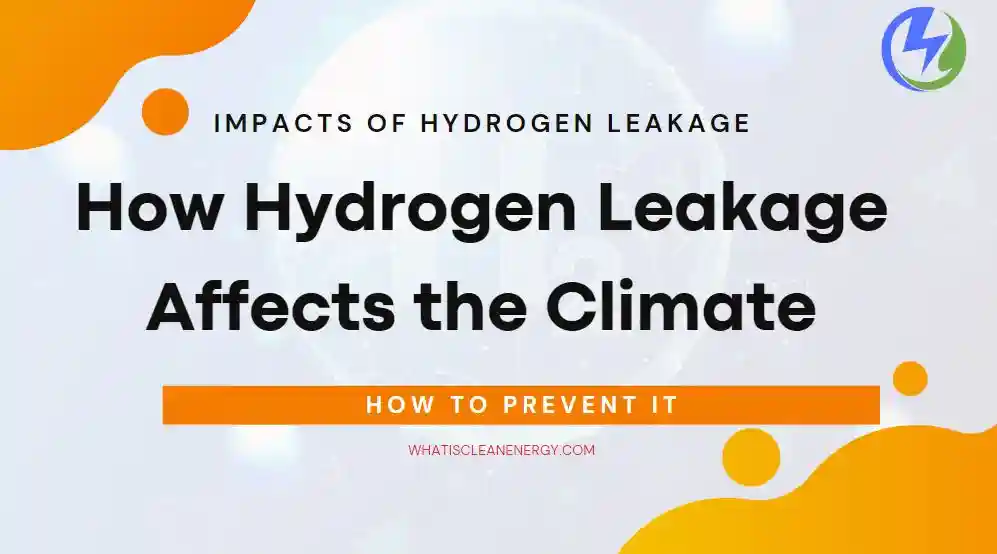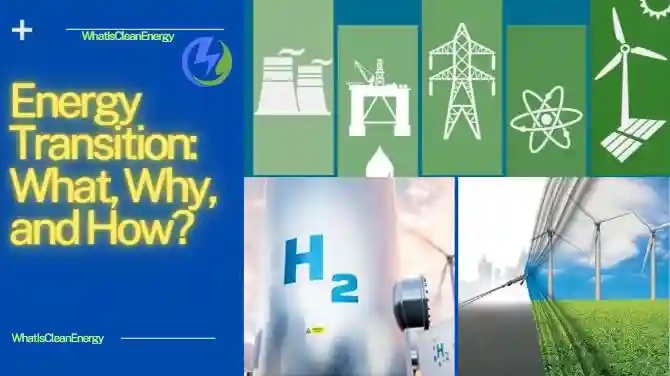Hydrogen is a clean energy source that does not emit carbon dioxide when used. However, hydrogen can leak into the atmosphere and affect other greenhouse gases. This can cause indirect warming and harm the climate. In this article, I will explain how hydrogen leakage happens, what are its climate impacts, and how to prevent them.
How hydrogen leakage happens

Hydrogen is the smallest molecule that exists. It can easily pass through materials and escape from pipes, tanks, or vehicles. Hydrogen leakage can happen at any stage of the hydrogen value chain, from production to end-use. For example, hydrogen can leak from electrolyzers that make green hydrogen from water and electricity. It can also leak from pipelines that transport hydrogen from one place to another. It can also leak from fuel cells that use hydrogen to generate electricity or power vehicles.
Hydrogen leakage can also pose safety hazards, as hydrogen is highly flammable and explosive when mixed with air.
Some of the main sources of hydrogen leakage are:
Hydrogen production
This involves various methods such as steam reforming, electrolysis, biomass gasification, and coal gasification. Depending on the method and the equipment used, some of the gases produced and hydrogen may leak into the atmosphere. For example, steam reforming produces carbon dioxide and water vapor, while electrolysis produces oxygen and water vapor.
Hydrogen transport
This involves pipelines, trucks, ships, and trains that carry hydrogen from production sites to end-users. Hydrogen can leak from these vehicles due to corrosion, damage, or improper maintenance. For example, a study found that 11% of hydrogen transported by truck in Germany leaked between 2010 and 2016.
Hydrogen storage
This involves tanks, cylinders, or other containers that store hydrogen for various applications. Hydrogen can leak from these containers due to pressure changes, temperature fluctuations, or manufacturing defects. For example, a study found that 3% of hydrogen stored in cylinders in Japan leaked between 2015 and 2017.
Hydrogen use
This involves various applications such as power generation, heating, transportation, and industry that use hydrogen as a fuel or feedstock. Hydrogen can leak from these applications due to leaks in pipes, valves, or equipment. For example, a study found that 0.5% of hydrogen used for power generation in Germany leaked between 2014 and 2016.
What are the climate impacts of hydrogen leakage?

Hydrogen leakage does not directly warm the climate, but it can increase the amounts of other greenhouse gases in the atmosphere. These include methane, ozone, and water vapor. Hydrogen reacts with these gases and changes their lifetimes, concentrations, and effects. For instance, hydrogen can extend the lifetime of methane, which is a powerful greenhouse gas. Hydrogen can also create more ozone, which is a harmful pollutant and a greenhouse gas. Hydrogen can also increase the amount of water vapor in the stratosphere, which is the upper layer of the atmosphere. Water vapor can trap more heat and warm the climate.
The climate impacts of hydrogen leakage depend on how much hydrogen leaks, how long it stays in the atmosphere, and how it affects other gases. According to a recent study, the five-year warming power of hydrogen is 20 times greater than carbon dioxide. This means that a pulse of hydrogen emissions can cause more warming in the short term than the same amount of carbon dioxide. Another study estimated that a high-risk scenario of hydrogen leakage could increase the global temperature by 0.1°C by 2050. This could offset some of the benefits of using hydrogen as a low-carbon energy source.
How to prevent hydrogen leakage

To prevent hydrogen leakage and its climate impacts, we need to take three main steps:
- Gather and analyze data on hydrogen leakage rates. We need to measure how much hydrogen leaks from real-world systems and compare it with theoretical estimates. We also need to monitor how hydrogen affects other greenhouse gases in the atmosphere. This will help us understand the current and future risks of hydrogen leakage and its climate impacts.
- Research and develop new technologies to detect, prevent, and mitigate hydrogen leakage. We need to improve the design and performance of hydrogen equipment and infrastructure. We need to use materials that are resistant to hydrogen permeation and corrosion. Also, we need to install sensors that detect hydrogen leaks at low levels and in different environments. We need to apply best practices and standards to reduce and repair hydrogen leaks. We also need to explore ways to capture and reuse leaked hydrogen or convert it to harmless substances.
- Regulate and incentivize hydrogen leakage reduction. We need to establish policies and regulations that limit and penalize hydrogen leakage. We need to set targets and benchmarks for hydrogen leakage reduction and track the progress. Also, we need to reward and support hydrogen producers and users who adopt low-leakage technologies and practices. We also need to raise awareness and educate the public and stakeholders about the benefits and challenges of hydrogen as a clean energy source.
Conclusion
Hydrogen is a promising energy source that can help decarbonize the energy system. However, hydrogen leakage can pose a threat to the climate by increasing the amounts of other greenhouse gases in the atmosphere. To avoid this, we need to collect and analyze data on hydrogen leakage rates, develop and deploy new technologies to prevent and mitigate hydrogen leakage and implement policies and incentives to reduce hydrogen leakage. By doing so, we can ensure that hydrogen is a climate solution, not a problem.




